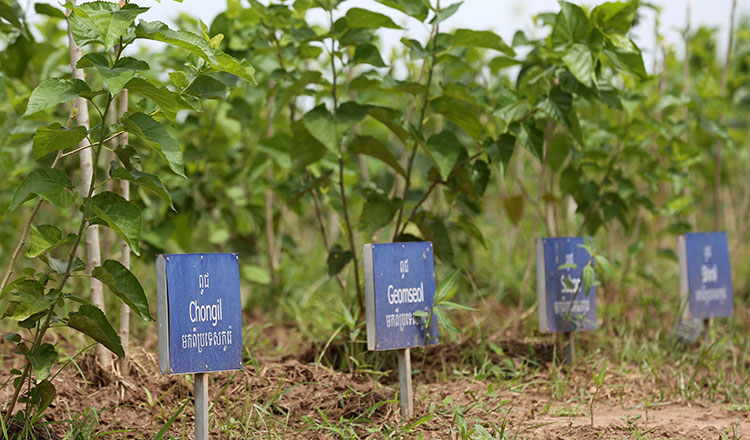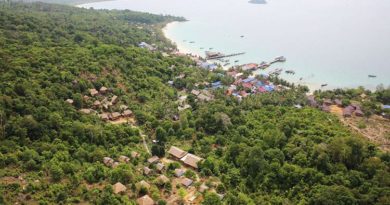BIZ-SCIENCE NERICULTURE: PHNOM PENH- Silk centre calls on private sector to take sericulture to the next level
.
Following a very successful year for the Kingdom’s sericulture sector in which its foundations have been cemented, the silk centre at the Royal University of Phnom Penh is ready for expansion.
The centre plans to increase its mulberry plantations to 200 hectares in 2019, a project for which it is seeking private sector support.
Mey Kalyan, chairman of the board of trustees at the Royal University of Phnom Penh (RUPP), and the person behind the establishment of the silk research centre at the university, told Khmer Times yesterday that in the past year and a half, the centre has laid down the foundations for a successful sericulture industry.
“We made significant progress: the lab was built and the biology team was established to improve the quality of silkworms.
“RUPP made considerable progress in researching new related products like silk soap, and it is now introducing sericulture in its curriculum,” Mr Kalyan said, adding that five silk ‘leaders’ and farms have been established, three in Kampong Speu, and the others in Kampong Chhnang and Mondulkiri.
“Most importantly, our reeling facility will be installed sometime next week, and will be operational this month, so, in a nutshell, the foundations of a silk value chain have been established,” he added.
However, to keep this momentum going, Mr Kalyan said the mulberry plantations must be expanded – from the current 15 hectares to at least 200 – particularly taking into consideration the addition of the new reeling machine, which will be installed this week in the Aoral Silk Community, a group of farmers in Kampong Speu supported by the silk centre.
“To carry out this project, we need participation from the private sector, as well as other silk communities,” Mr Kalyan said.

He said companies or communities interested in partaking in the project could grow mulberry trees in their property, raise silkworms and sell the cocoons to the silk communities associated with the centre.
.
Ea Hoknym, leader of the Aoral Silk Community in Kampong Speu, said they have already prepared for the installation of the reeling machine – including installing a system of solar panels to reduce energy costs and the environmental impact.
“Everything is ready. We just need to connect the machine to our solar system and start production,” he said.
“To fully utilise the machine, we need to be supplied by at least 200 hectares of mulberry trees. However, in the beginning, we might be OK with just 70 hectares until production becomes stable,” he said.
Mr Hoknym said the machine can produce about 50 kilograms of silk yarns per hour when running at full capacity.
Mr Kalyan said he is now in talks with various embassies in Phnom Penh, including Switzerland, Australia, South Korea, Japan and the United States, as well as the United Nations Development Programme and the government’s Rural Development Bank, for partnerships.
The goal is to eventually replace the 400 tonnes of silk that Cambodia currently imports with locally produced yarns, which, Mr Kalyan said, means total plantation size must eventually reach 20,000 hectares.
“We call on the private sector to join us by providing financial and technical support. We must all work together for inclusive economic growth,” he added. / Sok Chan / Khmer Times Share:













